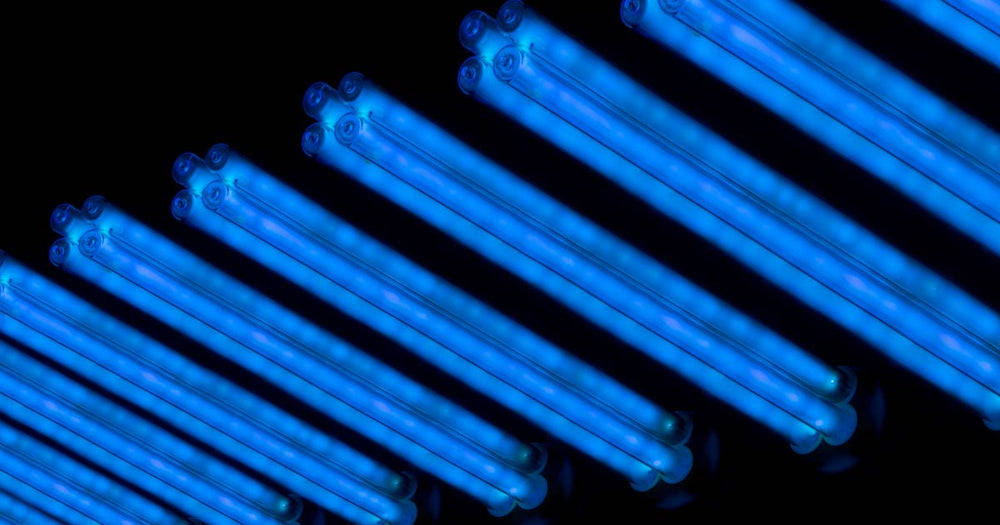It’s never fun to breathe stale indoor air, but during allergy, virus, and flu season, the quality of your indoor air truly becomes a pressing concern.
Most air purifiers will clear the air of common pollutants such as pollen, dust, dander, pet hair, odors, and smoke. However, when it comes to more serious pollutants such as mold and bacteria, opt for an air purifier that has UV light technology.
Ultraviolet air purifiers use powerful UV-C lights to disrupt and destroy DNA in bacteria, rendering them unable to reproduce, and causing them to naturally die out.
In this guide, we’ll discuss how to select the best UV air purifier model for your needs.
How Does UV Work in an Air Purifier?
In general, air purifiers fundamentally work in one of two ways: they cycle air through some kind of mechanical filter using a fan or blower, or they use advanced technology to alter the molecular structure of particles in the air. Because of this, not all air purifiers purify air in the same way, and not all methods are equally effective depending on your end goal.
Let’s talk about how UV works within an air purifier.
Ultraviolet light (UV) was first discovered as a way to sanitize surfaces. As far back as the 1800s, scientists found that sunlight could kill bacteria and stop the growth of bacteria on surfaces. From there, it was discovered that UV light could also disinfect the air.
Within an air purifier, air must be directed to exposure to a UV light. It’s typical for UV air purifiers to include a UV lamp inside of them in order for this exposure to take place.
Through this process, UV light has been proven to inactivate bacteria and viruses and is a widely used technology to reduce biocontaminants.
Is UV Light Safe?
UV light has a legacy of effective air purification and surface sanitization. UV light has also been proven effective at deactivating viruses like COVID-19. As a valuable air purification method, the most optimal use of UV light is through a multi-stage air purification process. But, is it safe?
In short, yes. The process of using ultraviolet light (UV) in the air purification process has been proven safe and effective. Air Oasis manufactures units with UV technology in a way that does not cause any harm when used as instructed. Air Oasis UV air purifiers use germicidal UV to sanitize air and surfaces, and are not dangerous to your health.
Many people associate the UV light used in air purifiers with damaging UV lamps and hazardous UVR. While overexposure to UV light can cause damage to the skin and eyes, the UV light used in a high-quality air purifier, like those from Air Oasis, are designed to prevent any direct exposure to UV light.
UV Light and Air Purifiers
The use of ultraviolet (UV) light dates back to the early 1900’s. Long known to hold therapeutic properties, UV light was first used to treat skin conditions.
Very early on, germicidal UV light was also used in the treatment of tuberculosis and to disinfect hospitals, kitchens, laboratories and meat processing plants. Back as far as 1908, UV-C light was used to disinfect municipal water supplies in France.
With widespread use, expansive research expanded our knowledge around the dangers of UV radiation to the human body. From this, sources of man-made UV were developed which provided safe, precise and effective treatment for a variety of conditions.
The use of UV lamps in UV air purification systems is an example of man-made UV sources successfully at work.
The Science Behind UV Light and Air Purification
UV-C light is responsible for the main disinfectant activity of UV air purification systems. With all its extra energy, UV has the ability to actually change the molecules that absorb it, with DNA being especially susceptible to these changes. In simple terms, ultraviolet light essentially bombards microorganisms around the UV lamp inside the filter and damages the DNA they need to live. This purifies the surface or air.
Because bacteria exist as only one cell, they rely on their DNA to survive. Therein lies the principle behind UV light sanitation.
UV air purifiers have been proven effective in a variety of settings, namely medical. One study followed the placement of germicidal ultraviolet lamps on the walls of healthcare facilities. Findings report the UV successfully disinfected surfaces with no statistically significant side-effects from UV overexposure.
Similar results were present in a study of the safety of upper-room ultraviolet germicidal air disinfection for room occupants of tuberculosis patients. In both studies, there were no significant negative effects to UV exposure, supporting the use of UV purification in a variety of healthcare settings.
Buy an Air Purifier With UV Light
Ultraviolet (UV) light has a variety of uses, medically and beyond. When it comes to air purification, there are countless options on the market. Whether you are looking to reduce basic air contaminants, viruses and bacteria, mold, or volatile organic compounds, finding the right air purifier for your specific needs is one of the most beneficial things you can do to improve your overall health.
IonicAir™ technology is lab-tested to reduce up to 99% of mold, viruses and bacteria, making UV light air purification a highly effective way to clean your indoor air. The ionization technologies break down viruses, bacteria, mold and VOCs down to a molecular level so that you can quite literally breathe easier.



